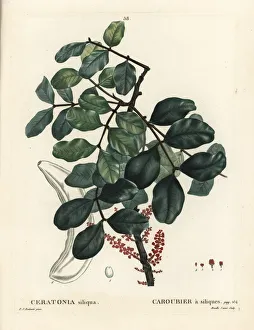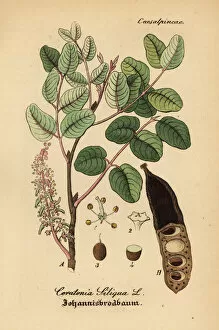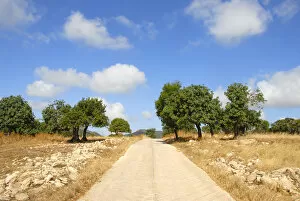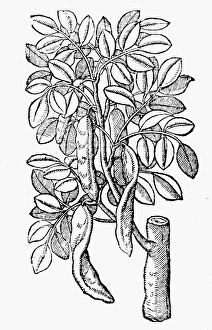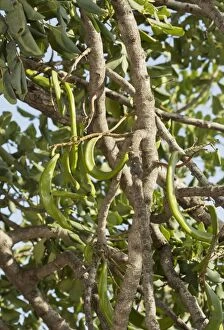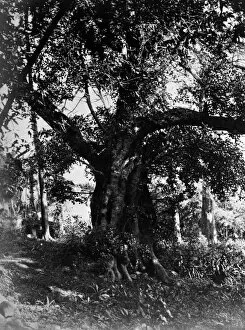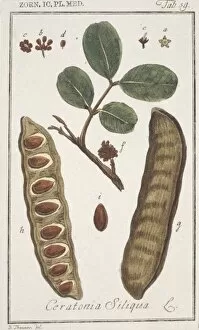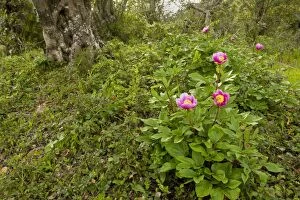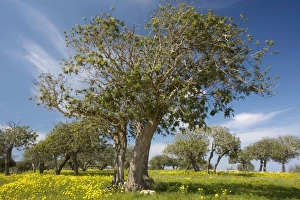Carob Collection
Carob, also known as the locust bean or Ceratonia siliqua, is a fascinating fruit that has been around for centuries
All Professionally Made to Order for Quick Shipping
Carob, also known as the locust bean or Ceratonia siliqua, is a fascinating fruit that has been around for centuries. Its rich history can be traced back to ancient times, as depicted in the beautiful illustration of the fruit from 1923. The carob tree itself is a sight to behold, with its sturdy branches and lush foliage, and is often found growing alongside other trees like liquorice, creating a harmonious blend of flavors and scents. In landscapes such as Neo Chorio in Southern Cyprus, carob trees line straight paths that lead you through breathtaking scenery. The Republic of Cyprus, nestled by the Mediterranean Sea in Europe, boasts these majestic trees that have become an integral part of its natural beauty. Botanists have long studied the carob tree's characteristics and uses. A woodcut from Thomas Johnson's edition dating back to 1633 showcases their dedication to understanding this remarkable plant. Close-up images capture the ripening fruits of the carob tree in all their glory. In Cyprus during March, one can witness nature at work as these fruits mature into delicious treats. Carob powder has gained popularity over time and finds its way into various culinary creations. From chopped bananas sprinkled with carob powder served with yogurt to mouthwatering desserts infused with this unique ingredient – there are endless possibilities when it comes to incorporating carob into your favorite recipes. Ceratonia siliqua or simply "carob" holds both historical significance and contemporary appeal. Whether admired for its aesthetic value or savored for its delightful taste profile, this versatile fruit continues to captivate people worldwide.


